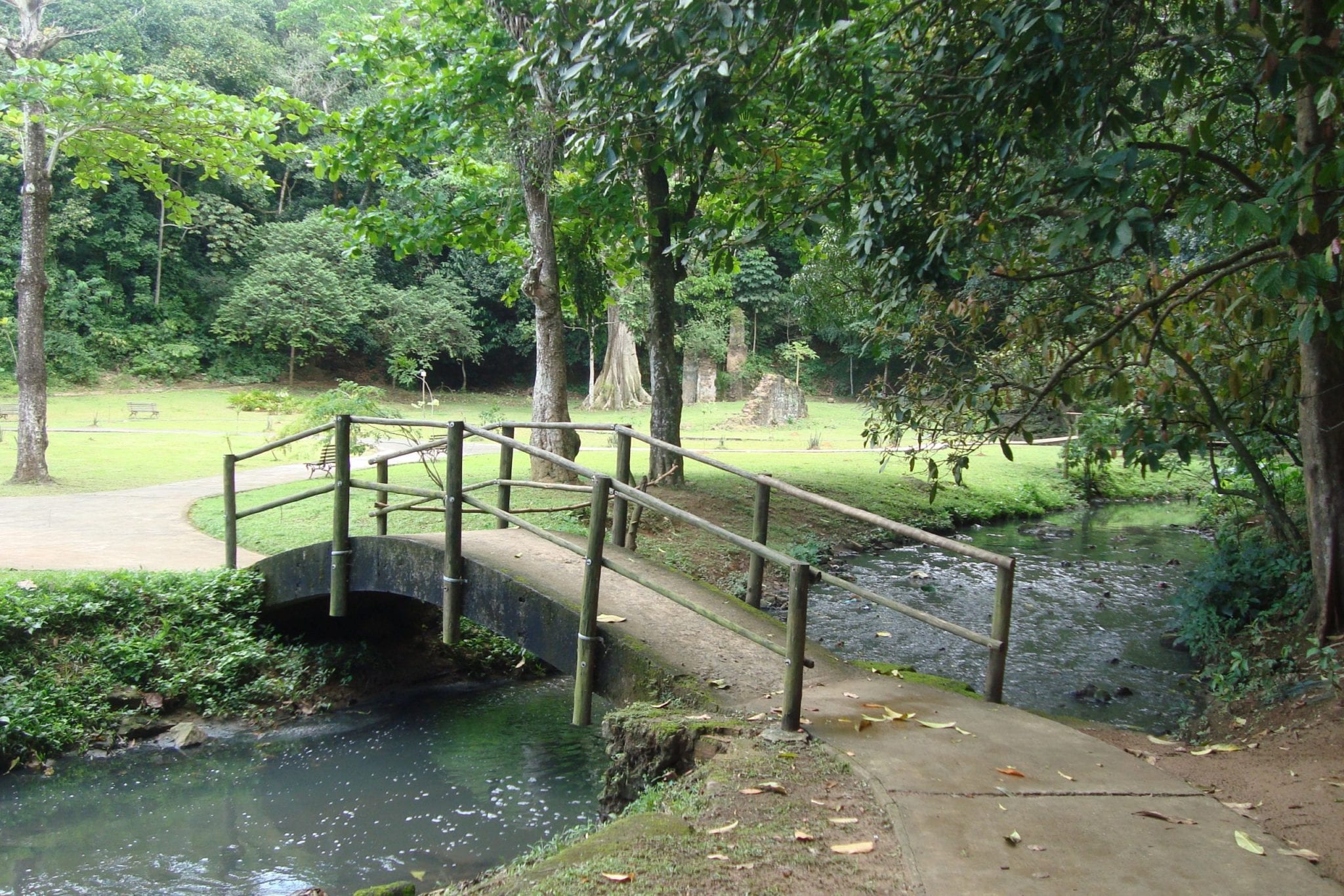A Sacred Leaf Garden in Pedra de Xangô

Labelled a protected geological site since 2017, Pedra de Xangô (Xangô Stone) is a natural rock formation near the city of Salvador, in the State of Bahia, Brazil. Located in one of the last remaining areas of the Atlantic Forest biome, Pedra de Xangô is also near to one of the largest housing estates in Latin America. Pedra de Xangô is considered by locals to be a mythical cultural heritage site and an important representation of their culture, and as such, activities have begun to enhance the area with the plantation of a 5 hectare park.
With a strong African influence, the spiritual traditions of the region are closely connected to its forests and rivers. The ancient concept of Orixá refers to the forces existing in nature, and ancient communities of the region used the expression “Kósí Ewê, kósí Òrìxá”, meaning “If there is no leaf, there is no Orixá”, depicting the importance of the area’s rivers and forests for these spiritual traditions to exist. Many local people still follow the philosophy of Candomblé, a religion closely linked to the natural elements. The region is affected by increasing urban expansion, which is a concern for spiritual leaders, as the native plants being lost to urbanization are used for a variety of purposes: from initiation ceremonies to simple healing teas. Everything in Candomblé depends on the leaves: for example, on traditional festival days, while the Ogan people sing songs calling the Orixá onto the land, the leaves on the ground are considered crucial for the host to come, greet, and bless his children and guests.
The city of Salvador is currently experiencing large urban expansion, putting at risk many of the region’s forests. Many Candomblé communities have become concerned about the preservation of their culture, and as such, the holy people of several Candomblé communities have joined the City Hall of Salvador with the hope of collectively recovering the green areas that were lost from poorly-managed urban growth. As a result, the Pedra de Xangô Park was created in one of the few remaining green areas of the city. The plantation project is being implemented by the Secretariat of Sustainability, Innovation and Resilience (SECIS), the Mário Leal Ferreira Foundation (FMLF) and the Gregório de Matos Foundation (FGM).
Candomblé groups such as the Terreiros of Mutalômbô Yê Kaiongo, Ilê Axé Oxalufã, Vodun Kwe tò zò, Ilê Axé Obá Baba Séré Ilê, Axé Odé Toqueji Lodemim, and residents of Cajazeiras and surrounding areas have carried out the planting of sacred trees in a location close to the Xangô Stone. Offerings were placed for the deities Oxossi and Ossain, and for the caboclo entities who also inhabit the forests, asking for permission and blessings for the remaining Atlantic Forest, hoping for the recovery of its trees, leaves, streams and springs. Each Terreiro – Candomblé community – donated a seedling, all of which were planted and blessed with rituals and songs, for these trees to be used for religious, medicinal and food purposes in the future by the people who live close to the park. Each seedling was planted with love, faith and hope for the region’s preservation. The morning of the planting – 8 June – was magical. One could feel the peace that nature provides, and there was a sense of fulfilled desire and accomplished mission. The deity Ossain was present, his energy felt by everyone there. Volunteers were assigned to take care of the seedlings, watering them when necessary. Thanks to this initiative, Terreiros that have lost their forest area and have little green space left will now be able to harvest the leaves that are essential for their rituals.
Preservation of the remaining Atlantic Forest is essential for this sacred area, one of the main symbols of the remaining African religions of this part of Brazil. The park will occupy 546.30 square meters and will have an amphitheater and open-air trails. Plans for the preservation of the Pedra de Xangô Park also include an auditorium and a protected space for exhibitions, all using materials with low environmental impact and high ecological value. In addition, the proposal for the creating an Environmental Protection Area (Protected Area for Sustainable Use, according to IUCN categorization) has created a strong mobilization of civil society for the protection of this area, especially researchers and followers of religions of African origin.










